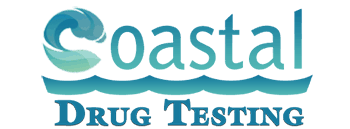 Our local DOT drug and alcohol testing centers are located in Oppenheim NY and the surrounding areas providing DOT drug testing, DOT alcohol testing and DOT physicals for all DOT modes regulated by Part 40. Same day service is available at our Oppenheim NY DOT drug testing facilities and most of our DOT drug testing locations are within minutes of your home or office.
Our local DOT drug and alcohol testing centers are located in Oppenheim NY and the surrounding areas providing DOT drug testing, DOT alcohol testing and DOT physicals for all DOT modes regulated by Part 40. Same day service is available at our Oppenheim NY DOT drug testing facilities and most of our DOT drug testing locations are within minutes of your home or office.
What type of DOT Testing is required?
Coastal Drug Testing provides DOT pre-employment, random, post-accident, reasonable suspicion and return to duty testing at our Oppenheim NY DOT drug testing centers.
If you hold a CDL license, a large, medium or a small trucking company, Coastal Drug Testing has a complete DOT compliance package which includes all the requirements to comply with CFR 49 part 40.
All Coastal Drug Testing DOT drug testing centers utilize SAMHSA Certified laboratories and a licensed Medical Review Officer as required by DOT part 40 regulations.
The U.S Department of Transportation (DOT) requires that all DOT regulated "safety sensitive" employees have a negative DOT pre-employment drug test result on file and be actively enrolled in a DOT approved random drug and alcohol random testing pool (consortium).
In addition, if a DOT regulated company has more than one "safety sensitive" employee, the employer must also have a written DOT drug and alcohol policy along with an on-site supervisor that must have completed a reasonable suspicion supervisor training program.
On the road and need a DOT Drug or Alcohol test? No Worries!
To be compliant with DOT regulations, a company's DOT drug and alcohol testing program must have the following components:
- Employee Drug Testing
- Written Drug and Alcohol Policy
- Supervisor Training
- Substance Abuse Referral
- Employee Education
- Random Selection Program
- Post Accident Testing
- Designated Employer Representative
- Federal Chain of Custody Forms
- Part 40 Regulations on File
The Department of Transportation (DOT) has specific drug and alcohol testing requirements for the all transportation modes all DOT agencies.
Our modes included are:
- Federal Motor Carrier Safety Administration (FMCSA)
- Federal Aviation Administration (FAA)
- Federal Transit Administration (FTA)
- United States Coast Guard (USCG)
- Pipeline and Hazardous Materials Safety Administration (PHMSA)
- Federal Railroad Administration (FRA)
Are You Enrolled in a DOT Consortium?
Individuals who are employed in a position designated as "safety sensitive" must be actively enrolled in a random drug and alcohol testing program. Oftentimes, covered employees will join a group of other DOT regulated employees in a random testing program and this is referred to as a DOT Consortium. Generally, an employer who has less than fifty employees or single operators will join the consortium which will comply with the random drug and alcohol testing requirements of 49 CFR Part 40. Employers that have over 50 employees who are regulated by Part 40 may elect to be enrolled in a "stand alone" random testing pool.
The DOT consortium is cost effective and complies with all requirements of 49 CFR Part 40 which mandates that all "safety sensitive" employees be enrolled in a random drug and alcohol testing program.
The Department of Transportation (DOT) has strict regulations requiring regulated companies and independent operators (CDL License Holders) to be an active member of a DOT drug and alcohol Consortium and failure to comply with these regulations can result in significant fines and other DOT sanctions.
We are fully versed in the DOT procedures for pre-employment drug testing, random drug testing, reasonable suspicion drug testing, post-accident drug testing, return to duty drug testing and follow up drug testing.
DOT regulated companies with multiple safety sensitive employees must also have an employee within the company who is assigned as the "designated employer representative" (DER). This is the person responsible for removing any DOT "safety sensitive" employee who is covered by 49 CFR Part 40 from performing a DOT safety sensitive position when a positive drug or alcohol test result has occurred or an employee has refused to take a required DOT test.
If you have recently become a DOT regulated company, within the next 18 months the Department of Transportation (DOT) will conduct a "new entrant" inspection to ensure that you are in compliance with all DOT regulations including the drug and alcohol testing requirements. If you are currently a DOT regulated company, you are subject to regular inspections to ensure compliance.
Avoid DOT fines, penalties and be complaint with all DOT drug and alcohol testing regulations! Coastal Drug Testing can assist small, medium and large DOT companies in complying with all requirements of 49 CFR Part 40.
DOT Drug Testing Locations in Oppenheim NY
(Don't see a location near you? Call us (800) 828-7086)
Local Area Info: Méret Oppenheim
Meret Elisabeth Oppenheim (6 October 1913 – 15 November 1985) was a German-born Swiss Surrealist artist and photographer. Oppenheim was a member of the Surrealist movement along with André Breton, Luis Buñuel, Max Ernst, and other writers and visual artists. Besides creating art objects, Oppenheim also famously appeared as a model for photographs by Man Ray, most notably a series of nude shots of her interacting with a printing press.
Meret Oppenheim was born on October the 6th, 1913 in Berlin. Oppenheim is named after Meretlein, a wild child who lives in the woods, from the novel Green Henry by Gottfried Keller. Oppenheim had two siblings, a sister named Kristin (born 1915) and a brother named Burkhard (born 1919). Her father, a German-Jewish doctor, was conscripted into the army at the outbreak of war in 1914. Consequently, Oppenheim and her mother, who was Swiss, moved to live with Oppenheim's maternal grandparents in Delémont, Switzerland. In Switzerland, Oppenheim was exposed to a plethora of art and artists from a young age. Oppenheim was also inspired by her aunt, Ruth Wenger, especially by Wenger's devotion to art and her modern lifestyle. During the late 1920s, Oppenheim was further exposed to different artworks connected to Modernism, Expressionism, Fauvism, and Cubism.
By 1928, Oppenheim was introduced to the writings of Carl Jung through her father and was inspired to record her dreams. Oppenheim was interested in Jung's analytical approach, particularly his animus-anima theory. Throughout her life, Oppenheim carefully analyzed her own dreams and transcribed them in detail in her writings. She attempted to use them when addressing “fundamental life questions.” Likewise, Oppenheim used iconography and motifs from Jung's archetypes within her work throughout the years; typical motifs Oppenheim used include spirals and snakes. Oppenheim renounced the term “feminine art” and adopted Jung's ideal androgynous creativity in her art in which masculine and feminine aspects worked simultaneously.
